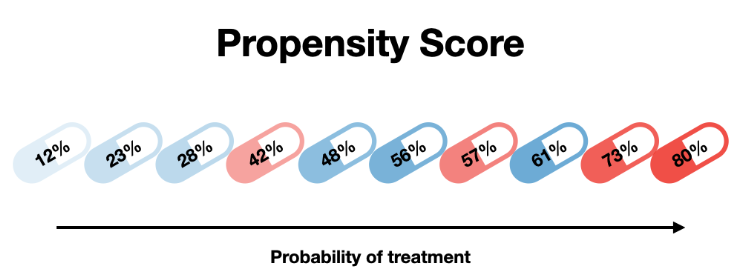Abolition Democracy

In the pursuit of a more equitable and just society, the concept of Abolition Democracy has emerged as a powerful framework, challenging traditional systems and offering a transformative vision for the future. This movement, rooted in the principles of equality and freedom, seeks to dismantle oppressive structures and create a society that values and uplifts all its members.
The term "Abolition Democracy" was coined by activist and scholar Angela Davis, who has been at the forefront of the movement for racial justice and prison reform. It encompasses a broad range of social and political ideas, aiming to eradicate systems of oppression and build a more democratic and inclusive society.
Understanding Abolition Democracy

Abolition Democracy goes beyond the simple idea of abolition; it is a call to action, a demand for systemic change. At its core, it advocates for the elimination of oppressive institutions, policies, and practices that perpetuate inequality and injustice. This includes not only the abolition of institutions like the prison industrial complex but also the transformation of systems that maintain racial, gender, and economic disparities.
One of the key principles of Abolition Democracy is the recognition that oppression is interconnected. Oppressive systems like racism, sexism, and capitalism often reinforce each other, creating a web of discrimination and marginalization. Thus, the movement advocates for a holistic approach to dismantling these systems, understanding that the liberation of one group is intertwined with the liberation of all.
Additionally, Abolition Democracy emphasizes the importance of grassroots democracy and community-led solutions. It calls for a society where power is decentralized and communities have the autonomy to make decisions that directly impact their lives. This involves fostering an environment where every voice is heard and respected, and where collective action is the driving force for change.
The Role of Education and Awareness
A critical aspect of Abolition Democracy is the role of education and awareness-raising. The movement recognizes that true transformation begins with a deep understanding of the historical and systemic roots of oppression. By educating individuals and communities about these issues, the movement aims to foster critical consciousness and empower people to take action.
Educational initiatives within the Abolition Democracy framework often involve teaching about the history of resistance and struggle, as well as the current realities of oppression. This includes learning about the experiences and perspectives of marginalized communities, understanding the impact of systemic racism and discrimination, and exploring alternative models of justice and governance.
| Educational Focus | Key Areas |
|---|---|
| Racial Justice | Understanding systemic racism, exploring anti-racist practices, and learning from diverse racial justice movements. |
| Prison Reform | Examining the prison industrial complex, advocating for alternatives to incarceration, and promoting restorative justice practices. |
| Gender Equality | Addressing gender-based violence, promoting feminist values, and working towards gender-inclusive policies and practices. |

By incorporating these educational components, Abolition Democracy aims to create a more informed and engaged citizenry, capable of driving systemic change.
Concrete Actions and Strategies
Abolition Democracy is not just a theoretical concept; it involves concrete actions and strategies to bring about change. These strategies are diverse and often context-specific, but they share a common goal: to challenge and transform oppressive systems.
- Community Organizing: Building strong, organized communities is a key strategy. This involves bringing people together to identify shared concerns, develop collective solutions, and take action to address systemic issues.
- Advocacy and Policy Reform: Working to influence and change policies at the local, regional, and national levels. This can involve lobbying for legislation, participating in political processes, and advocating for policy reforms that align with the principles of Abolition Democracy.
- Alternative Institutions: Developing and supporting alternative institutions and practices that embody the values of Abolition Democracy. This could include community-based restorative justice programs, cooperative economic models, or alternative education systems.
- Art and Cultural Expressions: Using art, music, and cultural expressions as tools for awareness, education, and resistance. These mediums can help amplify the voices of marginalized communities and inspire others to join the movement.
Real-World Applications and Successes

Abolition Democracy has already had significant impacts and successes in various communities and contexts. Here are a few examples:
Racial Justice and Police Reform
The movement has played a crucial role in the push for police reform and the abolition of harmful policing practices. Following the murder of George Floyd and the subsequent global protests, Abolition Democracy principles were at the forefront of the calls for transformative change. Many communities are now working towards diverting funding from police departments to invest in community services and alternatives to policing.
Additionally, the movement has advocated for the end of cash bail systems, which disproportionately affect low-income individuals and communities of color. This has led to the implementation of alternative pretrial services and the expansion of community-based support systems for those facing legal challenges.
Prison Reform and Restorative Justice
Abolition Democracy has been instrumental in promoting prison reform and the implementation of restorative justice practices. Many communities are now embracing restorative justice circles, which bring together victims, offenders, and community members to address harm and find solutions that repair relationships and prevent future violence.
Furthermore, the movement has been successful in advocating for the reduction of prison populations, particularly for non-violent offenses. This has involved pushing for the decriminalization of certain behaviors and advocating for alternatives to incarceration, such as community service and drug treatment programs.
Gender Equality and Anti-Violence Work
Abolition Democracy has also had a significant impact on gender equality and anti-violence efforts. The movement has worked to address gender-based violence, particularly within marginalized communities, by promoting feminist values and supporting survivors.
Additionally, it has advocated for the implementation of gender-inclusive policies and practices, such as inclusive language and pronoun usage, as well as gender-neutral restrooms and dressing rooms. These efforts contribute to creating safer and more welcoming spaces for all individuals, regardless of their gender identity or expression.
Looking Towards the Future
As Abolition Democracy continues to gain momentum and influence, the future holds immense potential for transformative change. The movement's vision of a more equitable and just society is not just a dream but a concrete goal that many are working towards.
One of the key challenges moving forward is sustaining the momentum and broadening the reach of the movement. This involves continuing to educate and engage diverse communities, especially those who may not have traditionally been involved in social justice work. By fostering cross-movement alliances and building bridges between different struggles, Abolition Democracy can become a powerful force for systemic change.
Furthermore, the movement must continue to adapt and innovate, finding new ways to address emerging issues and challenges. This could involve exploring the intersection of Abolition Democracy with other progressive movements, such as environmental justice, economic democracy, and digital rights. By recognizing the interconnectedness of these struggles, the movement can develop holistic solutions that address the root causes of oppression and inequality.
In conclusion, Abolition Democracy offers a powerful framework for challenging oppressive systems and building a more just and democratic society. Through education, community organizing, and concrete actions, the movement is already making significant strides towards its vision. With continued dedication, collaboration, and innovation, Abolition Democracy has the potential to bring about transformative change, creating a world where all individuals can thrive and realize their full potential.
What is the historical context of Abolition Democracy?
+The roots of Abolition Democracy can be traced back to the abolitionist movement of the 19th century, which sought to end slavery in the United States. However, the modern conception of Abolition Democracy emerged more recently, particularly in the context of the prison abolition movement and the broader fight for racial justice.
How does Abolition Democracy differ from traditional reformist approaches?
+Abolition Democracy goes beyond reform by advocating for the complete dismantling of oppressive systems. While reformist approaches often seek to improve existing structures, Abolition Democracy recognizes that these structures are inherently flawed and must be replaced with more equitable alternatives.
What are some specific examples of successful Abolition Democracy initiatives?
+One notable example is the community-based restorative justice programs that have been implemented in various cities, offering an alternative to the traditional criminal justice system. Additionally, the movement for police abolition and the push for community-led safety initiatives are gaining traction, showcasing the power of Abolition Democracy in action.



